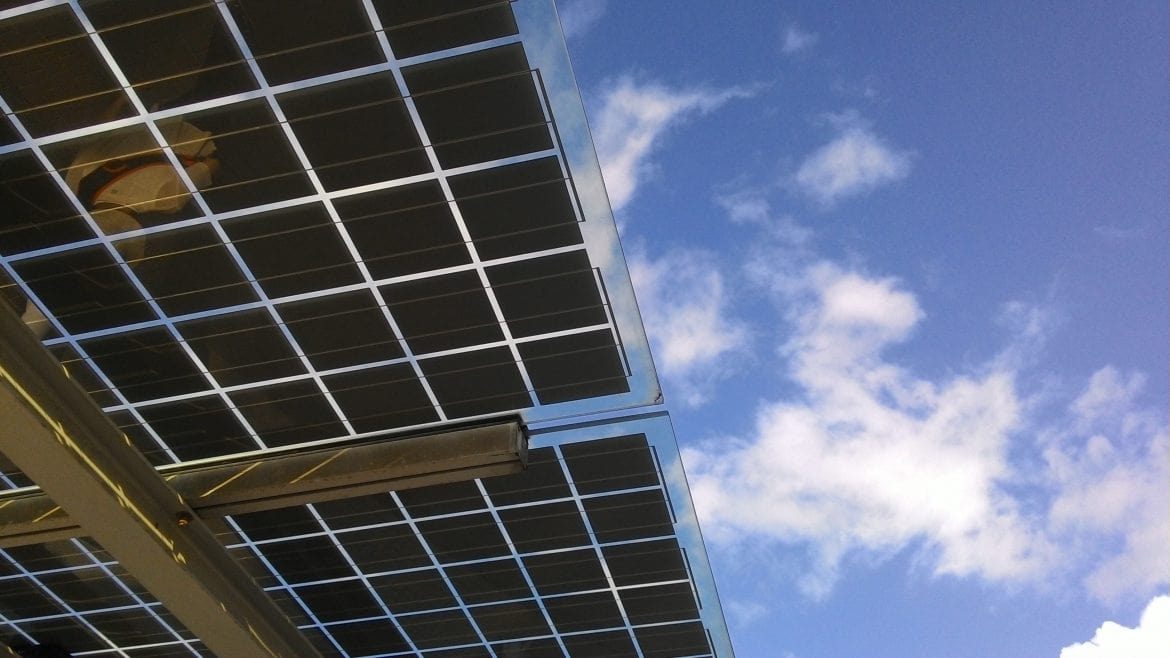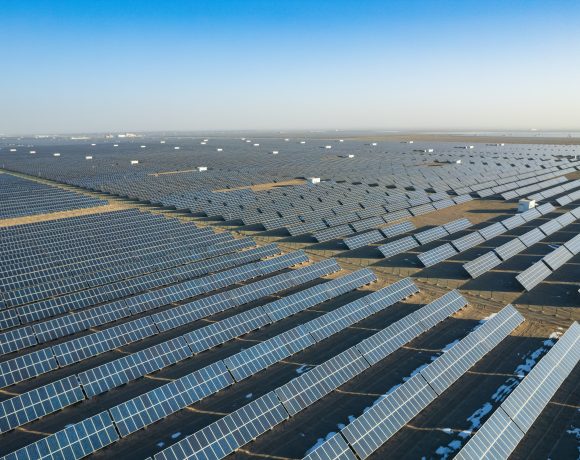- Bifacial technology is one of the important means to improvise the annual energy yield of a PV system, while drastically reducing the levelised cost of energy (LCOE). Unlike regular solar modules that come with a singular face for absorption of light, Bifacial solar modules are equipped to allow passage of light from both sides of the solar cell.
- Bifacial modules are available in different capacities, which can be also installed using solar tracker technologies. These trackers allow adjusting the orientation of solar modules based on the sun and time movement.
- They usually perform better on flat commercial rooftops, as it allows more room for tilting and thus, bouncing reflected light to the rear of the modules.
- Bifacial solar modules are created using bifacial cells, the cost of which is higher as compared to mono-facial cells. However, due to its enhanced performance and increase in the amount of energy generated, the modules ensure higher return on investment and the benefits can be reaped in the long term.
India’s per capita energy consumption is currently inching towards one-third of the world average. Our renewable energy initiatives are proving to be quite successful, and we have also emerged as one of the leaders in renewable energy equipment. As we walk towards this path, our country is partaking in more and more green energy initiatives, thereby, constantly introducing innovative techniques to further enhance the energy generated.
Technology plays a crucial role in almost every industry today. While India is naturally blessed with abundance of solar energy, the innovation in technology to utilise this energy effectively makes all the difference. There have been constant advancements in the field of renewable energy, with newer technologies making their way to increase the efficiency of solar modules. One such technology is the Bifacial solar modules.
What are Bifacial Solar Modules?
Bifacial technology is one of the important means to improvise the annual energy yield of a PV system, while drastically reducing the levelised cost of energy (LCOE).
Unlike regular solar modules that come with a singular face for absorption of light, Bifacial solar modules are equipped to allow passage of light from both sides of the solar cell. The major significant difference is that the rear surface of the PV module is not covered with backsheet. Instead, a finger grid is employed to allow sunlight to enter from rear side as well. This helps in increasing the efficiency per cell, resulting in an increase in the total energy generation along with reduced construction costs. They often prove to be a lot more durable because both sides are ultraviolet resistant. Moreover, they also eliminate potential induced degradation concerns to quite an extent.
How are they different?
Bifacial solar panels are usually extremely thin (25 mm front side and 6 mm back side), with negligible amount of shaded space on both, front and backsides of the module surface. The silicon material used in these bifacial cells is of utmost quality, which makes it possible for photo-generated charges on the rear surface to produce more power. The design also requires transparent material on either of the module sides.
Bifacial modules are available in different capacities, which can be also installed using solar tracker technologies. These trackers allow adjusting the orientation of solar modules based on the sun and time movement. This helps in a lot more extensive, efficient and also consistent energy capture, which is quite useful; especially when the sun changes its position. A bifacial solar module that comes with a tracker can offer about 25% more generation as compared to a set of modules which has no tracker.
Sunshot Technologies
The installation
These modules encourage experimentation, where they can be tilted in multiple angles to ensure maximum power is generated. They usually perform better on flat commercial rooftops, as it allows more room for tilting and thus, bouncing reflected light to the rear of the modules. Bifacial panels have the potential to be beneficial in case of large-scale solar installations, leading to higher energy output. The floor colour too plays an important role in the overall performance of the bifacial solar module. The lighter the colour of the floor, the higher will be the reflection of the sun on the back side of the panel, resulting in higher efficiency. In most cases, white is the most preferred colour for best results.
Cost incurred
Bifacial solar modules are created using bifacial cells, the cost of which is higher as compared to mono-facial cells. These modules also require a different approach to manufacturing, due to its requirement of multiple layers, further enhancing the cost. This makes the upfront cost of Bifacial solar modules on the higher side. However, due to its enhanced performance and increase in the amount of energy generated, the modules ensure higher return on investment and the benefits can be reaped in the long term. On an average, Bifacial solar modules project cost is 15 – 25 % higher than mono-facial PV module project, and generates 15 – 25 % more energy, comparatively.
To summarize, deployment of bifacial panels is already picked up in several countries including USA, Europe and Middle East, but India is yet to embrace the technology to its full potential. India is one of the sunbelt regions and hence the ground/roof is bound to exhibit higher reflectance, making bifacial one of the most preferred technology in the country. Higher the energy generated will further lower the amount of carbon emissions released, helping India achieve its sustainability goals at a faster pace.






NO COMMENT